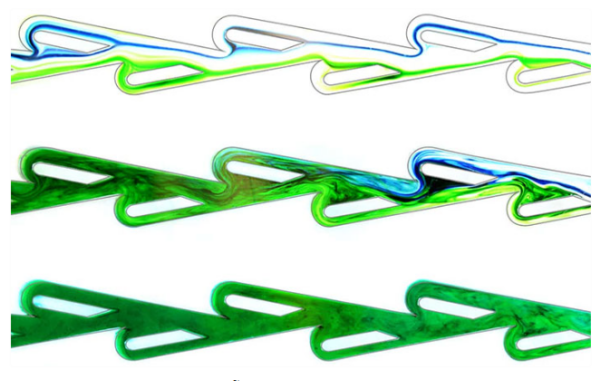Among Nikola Tesla’s many genius inventions, several have been forgotten or have not been properly utilized due to the technological limitations of his time. Despite being envisioned over a century ago, some of Tesla’s ideas are only now finding practical applications.
Recently, one such almost forgotten invention by Nikola Tesla has found contemporary relevance: the microfluidic regulating valve, commonly known as the Tesla valve.
The Tesla valve features an unconventional path where the main flow of liquid is interrupted by small microfluidic channels. These auxiliary channels branch off and then rejoin the main flow, designed with a curved, droplet-like shape that allows fluid to flow in only one direction. If fluid attempts to flow in the opposite direction, it is completely blocked. Essentially, Tesla designed this valve to function as a one-way fluid regulator without the need for pumps or moving parts (such as valve gates or pistons), which are prone to wear and tear. The microfluidic channels create a unidirectional flow naturally.

The path in the Tesla valve is quite peculiar.
Associate Professor Leif Ristroph from New York University’s Mathematical Sciences Research Institute stated: “The world remembers Tesla as a wizard for his invention of alternating current electricity, but his research on fluid flow control was also far ahead of his time. This type of valve, patented by Tesla in 1920, regulates one-way flow by creating turbulent and vortex flows within the duct, which at certain speeds, enable one-way drainage while blocking reverse flow.”
Professor Ristroph further explained: “Additionally, vortex flow is generated at a much lower liquid flow rate compared to pipes with conventional designs. In Tesla’s pipes, vortex flow can be achieved at flow rates 20 times lower than those in typical circular-section ducts, thus effectively creating a one-way flow control. This has wide-ranging applications across various industries.”
In theory, this is how it works. In terms of applications, the Tesla valve, invented more than 100 years ago, has numerous practical possibilities. Tesla valves perform best under irregular flow conditions, where fluid flow is influenced by pulsations. “They can be used to harness vibrational kinetic energy in engines or industrial machines to manage fuels, coolants, lubricants, or other gases and liquids.” There is even potential for their use in the space industry, where spacecraft experience significant vibrations, to regulate the refueling rhythms of rocket engines.
Associate Professor Ristroph concluded: “It is remarkable to see that an invention from over a century ago is still not fully understood and has potential applications that we are only beginning to explore.”










